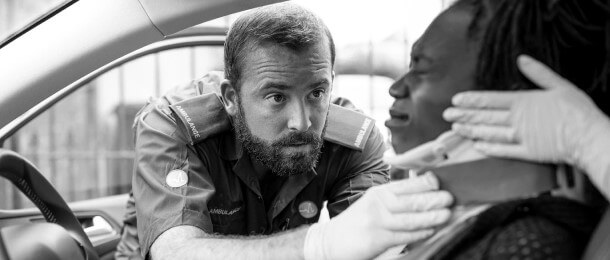News: 3 firefighters hospitalized after Hwy 47 crash in Uxbridge
UXBRIDGE, ON – Three firefighters were sent to a hospital after a crash on Highway 47 in Uxbridge on Monday,...
Car accidents can have lasting effects beyond physical injuries. Many victims experience emotional and psychological distress, which can impact their daily life, relationships, and overall well-being. While physical injuries may heal, the psychological and emotional trauma caused by an auto accident can persist for months or even years. Emotional distress is a form of mental suffering that can manifest through different conditions. If you have suffered emotional harm due a traumatic auto accident or due to someone else’s negligence, you may be eligible for emotional distress compensation in Canada.
Emotional distress is a state of mental anguish that may involve a variety of symptoms. It may result from a mental health issue or particular circumstances (Medical News Today, 2025). Emotional or mental distress is not something you can see psychically like a bruise, it is often much more subtle.
Experiencing emotional distress can interfere with everyday life and make it difficult to return to normal activities. Symptoms may include:
These symptoms can vary from person to person, and may be influenced by the presence of any underlying mental health disorders.
The causes of emotional distress differ, for some people emotional distress is due to a traumatic experience or event. However, it can also result from a wide range of things. Causes can be from:
In Canada, there are two primary types of emotional distress claims under personal injury law:
This occurs when someone deliberately causes emotional harm through a purposeful act such as intentional acts of physical harm, workplace harassment, or sexual assault. The legal elements required to prove this claim include:
This occurs when an individual experiences psychological distress or injuries due to someone else’s negligence, such as a motor vehicle accident or medical malpractice. To prove emotional distress damages, you must show:
In Canada, damages for emotional distress claims fall into two main categories:
These aim to seek compensation to reimburse the plaintiff for harm suffered:
Awarded in exceptional cases to punish the defendant or deter future misconduct:
Proving an emotional distress lawsuit can be challenging, but certain types of evidence can strengthen your case:
1) Medical Records & Reports: Seeking medical attention after a traumatic accident is crucial. A mental health professional can diagnose conditions like PTSD, depression, or anxiety. Medical records, therapy notes, and psychological evaluations can demonstrate the severity of psychological trauma.
2) Witness Statements: Testimonies from family members, friends, or colleagues can help establish how the accident has affected your life.
3) Expert Testimony: A qualified lawyer can work with psychologists/psychiatrists to explain the impact of the mental trauma and emotional symptoms to the court.
4) Documentation of Life Changes: Keeping a journal of how emotional distress has interfered with your work, relationships, and routine can serve as compelling evidence.
When pursuing an emotional distress claim, working with a personal injury lawyer is crucial. These legal professionals have the experience and expertise to navigate the complexities of emotional distress cases, ensuring all relevant laws are applied correctly and that your claim is effectively supported in court.
To establish a valid emotional distress claim, four essential legal elements must be proven:
Immediately after an accident, get medical treatment for both physical injuries and psychological symptoms. A mental health professional can properly diagnose conditions.
A personal injury lawyer experienced in emotional distress lawsuits can assess your case and guide you through the legal process.
Work with your lawyer to collect medical reports, witness statements, and documentation that proves the extent of your emotional distress.
Your lawyer will file a legal claim against the responsible insurance company or at-fault party.
Most personal injury claims are resolved through negotiations with the insurance company. If a fair settlement is not reached, the case may go to trial.
If the insurance provider refuses to offer adequate compensation, your lawyer will take the case to court, where a judge or jury will determine liability and damages.
In Canada, most personal injury lawsuits must be filed within two years of the traumatic event. However, cases involving sexual assault, workplace harassment, or unsafe working conditions may have extended limitation periods. Consulting with a qualified lawyer early can ensure your legal rights are protected.
To build a strong case, evidence must demonstrate the severity of emotional distress and its impact on daily life. This may include expert testimonies, personal statements, and medical proof.
Compensation for emotional distress claims in Canada vary significantly based on the specifics of each case. While non-pecuniary damages for pain and suffering are subject to a cap (approximately $444,550 as of April 2024), additional compensatory damages, including lost wages and medical expenses, can significantly increase the total award.
If your personal injury claim is successful, you may be entitled to financial compensation for:
This includes both physical and personal injury claims and emotional distress damages caused by the car accident itself.
Covers the cost of therapy, psychiatric treatment, exposure therapy, cognitive therapy, and medications.
If your mental injury or anguish prevents you from working, you can seek compensation for lost wages and future health care costs.
If a loved one was killed in a motor vehicle accident, surviving family members can seek compensation for funeral costs and mental suffering.
In cases involving intentional acts, extreme negligence or intentional harm, the court may award punitive damages to deter similar conduct in the future.
Pain and suffering refers to the physical and mental anguish, a victim endures after a motor vehicle accident. This not only includes chronic pain but also psychological injuries. Compensation for pain and suffering is considered non-economic damages, meaning it does not have a direct financial cost but significantly affects a victim’s life enjoyment and overall well-being. Courts consider factors such as duration of recovery process and impact on daily life when determining pain and suffering compensation.
After an accident, victims often face extensive medical expenses for emergency care, ongoing treatment, and rehabilitation. Compensation can cover the costs of:
It is essential to seek medical attention immediately following an accident to ensure injuries are properly diagnosed and documented, strengthening your personal injury claim.
Victims of serious, traumatic brain injury often experience lost wages due to time off from work for recovery. In more severe cases, a victim may be unable to return to work permanently, resulting in a significant loss of future earnings. Compensation for income loss can cover:
To claim income loss compensation, victims may need to provide pay stubs, employment records, and medical records as documentation proving their inability to work.
Rehabilitation is a critical part of the recovery process for victims suffering from physical and psychological injuries. Compensation for rehabilitation costs includes: physical therapy, mental health treatment, group therapy, assistive devices, and long-term care for victims with permanent disabilities.
Suffering from emotional distress lawsuit psychological injuries after a motor vehicle accident or other traumatic event can have long-lasting consequences on your daily life, well-being, and ability to work. Unlike physical injuries, emotional distress and mental suffering are often difficult to quantify, making emotional distress claims more complex. Consult with one of our many qualified personal injury lawyers at Grillo Law to ensure you receive fair compensation for the emotional and physical harm you have endured.

Blog
UXBRIDGE, ON – Three firefighters were sent to a hospital after a crash on Highway 47 in Uxbridge on Monday,...
HAMILTON, ON – A crossing guard was killed in a crash involving a trash truck in the Hill Park area...
BRAMPTON, ON – A man was left in critical condition as a result of a pedestrian crash that happened along...

Request a free consultation!
Call us today for a FREE consultation regarding your accident benefits claim.
Call: +1 855-225-5725
You will not pay any fees
until your case is won or settled
REQUEST A FREE CONSULTATION!
You will not pay any fees until your case is won or settled.
Thank you!
Amet minim mollit non deserunt ullamco est sit aliqua dolor do amet sint. Velit officia consequat duis enim velit mollit.